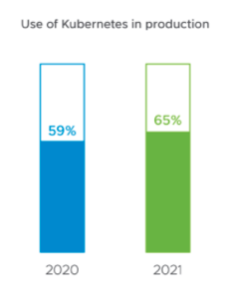Kubernetes Maturity Phase 4: Security, Efficiency and Reliability
In our earlier articles, we introduced the Kubernetes maturity model, discussed how to prepare for Kubernetes, explored the transformation phase, planned deployment and built confidence in successful deployment. Now, you’re ready to improve your Kubernetes deployment’s security, efficiency and reliability.
Reaching this phase of the Kubernetes maturity model is a significant milestone. You’re actively deploying and shipping features successfully into Kubernetes and have a solid foundation to improve the security, efficiency and reliability of your Kubernetes clusters. Your development teams are comfortable with Kubernetes terminology, including deployment, daemon set, service and namespace. They’re also able to modify some configurations of Kubernetes resources, such as ConfigMap and Helm charts. You and your team know how to troubleshoot the continuous integration and continuous deployment (CI/CD) process and apps and services within Kubernetes, including logs and metrics. You’ve also established standards for CI/CD, infrastructure-as-code (IaC) and configurations. Now it’s time to start monitoring to get a better understanding of your service challenges and make improvements.
Security, Efficiency and Reliability
To be successful in adopting Kubernetes across your organization, you need to dedicate some time to improving security, efficiency and reliability. Investigate these key topics to gain the needed visibility into your configurations to improve operations:
Security: Who is responsible for Kubernetes cluster security? How will cluster security be managed? Can you identify misconfigurations that leave security holes in your container and K8s implementation quickly?
Efficiency: Is Kubernetes running efficiently? Who is responsible for monitoring resource utilization to ensure you aren’t overprovisioning or underprovisioning resources? What’s the scope of your application or service?
Reliability: Does your Kubernetes adoption introduce any downtime challenges? Is your system reliable? Are you implementing the self-healing, autoscaling functionality K8s offers? If so, have you done it without introducing configuration problems?
Each of these critical areas of concern requires you and your team to develop policies that will help you manage related configuration issues across your clusters. After you develop these policies, you need to be able to enforce them. Enforcing policies automatically, for example, by using policy-driven configuration validation, dramatically increases your visibility and control across clusters, which can help you to:
- Enforce the custom policies you created through Open Policy Agent (OPA) integrations, either at the CI/CD stage or as an admission controller
- Prevent mistakes from entering the production environment by detecting issues during application development
- Save time by automatically scanning containers for vulnerabilities during development and after release to production environments, so you know when a newly announced CVE impacts your application
- Save time by automatically auditing clusters for weaknesses
- Reduce costs by automatically identifying ways to increase the efficiency of Kubernetes compute resources
“An important sign of Kubernetes momentum is the continuing shift to production, growing from 59% in the 2020 report to 65% this year.”
Challenges and Outcomes
Although this phase focuses on improving your Kubernetes deployment, don’t expect that everything will be perfect. As with earlier stages of maturity, you should expect to experience new pain points as you improve operations. A few of the challenges you may encounter include:
- Complexity that is well outside of your comfort zone, and you’re not sure how to handle it.
- Maintenance and operations efforts are significant, which is costing your team time and creating a lot of extra work.
- New worries appear, related to insufficient staffing or staff who do not have the skills needed to address deeper Kubernetes challenges.
Overcoming these types of challenges at this level of maturity can be complicated, much like Kubernetes itself. Resolving them may require you to hire experts in-house, although it can be challenging to find the right talent and you may not have the budget to make the hires you need. This is an area where training for your team, bringing in professional and managed services, conducting audits and bringing in continuous scanning software can help resolve issues.
Although you may encounter some challenges, this is definitely not the time to be discouraged. You really have achieved a significant milestone in your Kubernetes maturity! During this phase, you spent the time exploring the security, efficiency and reliability necessary to improve cluster configurations. Not only that, you now have gained considerable experience in improving your environment, something that will always be an ongoing focus as it changes. Kubernetes itself, and its ecosystem, continue to mature, so don’t expect your improvements to happen just once.
At this stage of Kubernetes maturity, your team will be able to focus on your business, possibly building the applications and services that are your competitive differentiator, instead of spending significant amounts of time on maintaining Kubernetes.
In terms of K8s, you haven’t reached maturity just yet. The next phase focuses on achieving a deeper understanding of workloads and using sophisticated monitoring that helps you drive policies and controls. Once you complete that phase, of course, you’ll continue to optimize in order to realize the full benefits and value of Kubernetes.





